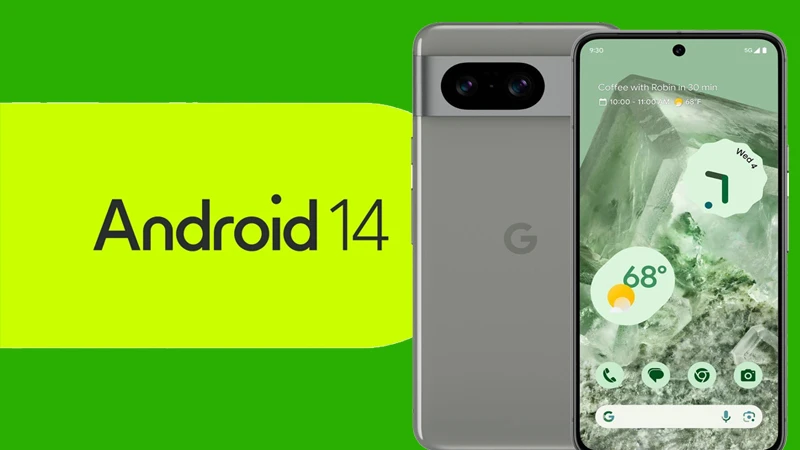In the fast-paced world of smartphones, staying up-to-date with the latest operating system is crucial for optimal performance and access to new features. As of November 9, 2023, Google has rolled out the highly anticipated Android 14 update for various Pixel devices, enhancing user experience and introducing exciting functionalities. Let’s delve into the details of the update and how Pixel users can make the most of Android 14.
Android 14 Rollout for Pixel Devices
Google has prioritized a range of Pixel devices for the Android 14 update, ensuring a broad spectrum of users can benefit from the latest enhancements. The supported devices include:
- Pixel 4a (5G)
- Pixel 5 and Pixel 5a
- Pixel 6 and Pixel 6 Pro
- Pixel 6a
- Pixel 7 and Pixel 7 Pro
- Pixel 7a
- Pixel Fold
- Pixel Tablet
- Pixel 8 and Pixel 8 Pro
Notably, the Pixel 5 series and the Pixel 4 (5G) from 2020 are among the older models capable of running the Android 14 developer preview.
Updating Your Pixel Device to Android 14
For users with a compatible Pixel device, receiving the Android 14 update is a straightforward process. Most users won’t need to perform a full data reset, but it’s advisable to back up your data before initiating the update.
Android 14 over-the-air (OTA) updates and downloads are available for the listed Pixel devices. Alternatively, users can opt for manual installation by flashing their devices. Google recommends using the Android Flash Tool for a seamless and secure flashing process. Detailed instructions on how to flash a system image can be found on the Pixel downloads page.
Exploring Android 14 on Emulator
For developers and enthusiasts eager to explore Android 14 without relying on physical devices, setting up the Android Emulator is an excellent solution. The emulator allows users to emulate various screen sizes and device characteristics, providing a versatile testing environment.
Setting Up a Virtual Device (Phone)
- Install Android Studio Flamingo 2022.2.1 or higher.
- In Android Studio, update the Android Emulator via the SDK Manager.
- Create a new Android Virtual Device (AVD) using a supported Pixel device and a 64-bit Android 14 emulator system image.
- Launch the virtual device from the AVD Manager for testing.
Setting Up a Virtual Device (Tablet or Large-Screen)
- Follow the same initial steps.
- In the Device Manager, create a device definition with a large screen, such as the Pixel C in the Tablet category.
- Download the Android 14 system image (Android API Upside Down Cake) and complete the setup.
- Launch the virtual device for testing large-screen scenarios.
Resizable Emulator for Android 14 :
Introducing a new feature in Android Studio Chipmunk | 2021.2.1 or higher, the resizable emulator allows users to toggle between four reference devices: phone, foldable, tablet, and desktop. This flexibility streamlines layout validation and behavior testing, offering convenience for both design and runtime testing.
Developers can create a resizable emulator by using the Device Manager in Android Studio and selecting the Resizable device definition in the Phone category.
Android 14 on Pixel 8 Series
Excitingly, the Pixel 8 series is the first to come preloaded with Android 14. Google has extended its support for the Pixel 8 series for an impressive 7 years, setting a benchmark in the industry. The stable Android 14 update has landed on supported Pixels, marking a significant milestone in the Pixel lineup.
Android 14 Compatibility Beyond Pixel
The Android 14 update is not exclusive to Pixel devices. Other manufacturers, including Samsung, OnePlus, and Xiaomi, are gearing up to release their versions of Android 14. If you own a device from the last couple of years, there’s a high likelihood that Android 14 is on the horizon for your device.
List of Pixel Devices Receiving Android 14
All Google Pixel devices, starting from Pixel 4a 5G to the latest Pixel 7, Pixel Fold, and Pixel Tablet, have received the Android 14 update. Google’s commitment to providing three years of major software updates and seven years of support for the Pixel 8 series puts them ahead of competitors in terms of software longevity.
FAQ’s
Can I manually install Android 14 on my Pixel device?
Yes, users have the option to manually install Android 14 by flashing their devices. The recommended tool for this process is the Android Flash Tool.
Will Android 14 be available for older Pixel devices like the Pixel 4a?
Unfortunately, Pixel 4a has exhausted its update quota and won't receive the Android 14 update. However, Google's commitment to extended support with the Pixel 8 series showcases its dedication to software longevity.
Bottom Up
Android 14 update brings a plethora of features and improvements to supported Pixel devices. Whether you choose to receive the OTA update, manually flash your device, or explore the new features on the emulator, Android 14 ensures a smooth and enhanced user experience. Google’s commitment to extended software support sets a precedent for the industry, promising a lasting and up-to-date Android experience for Pixel users.

